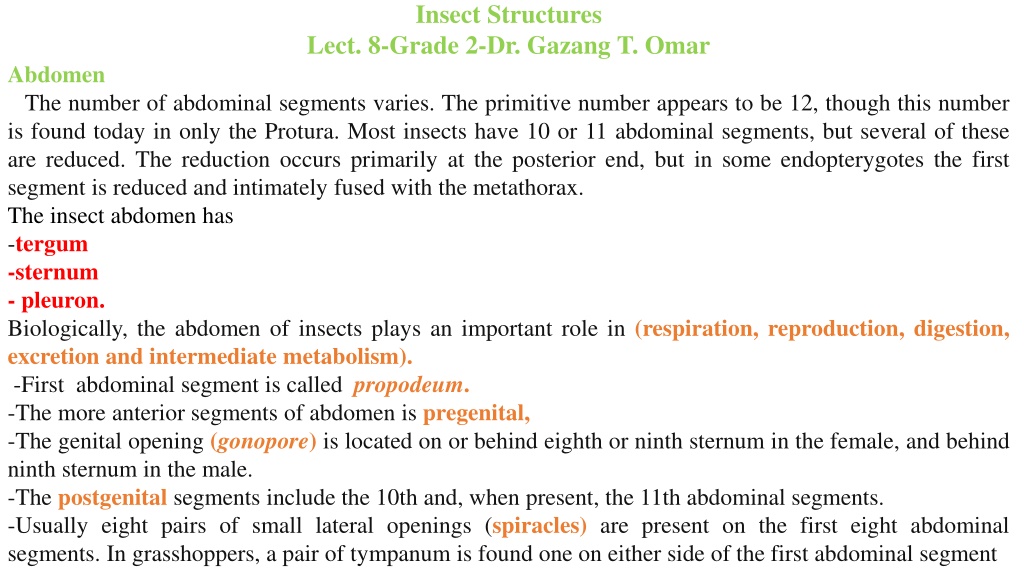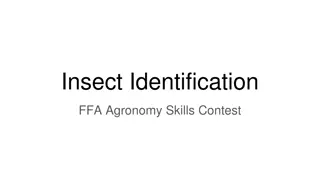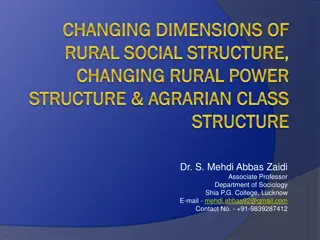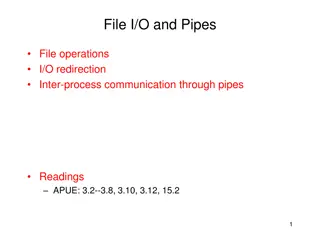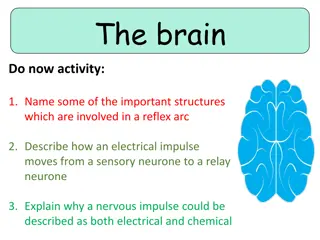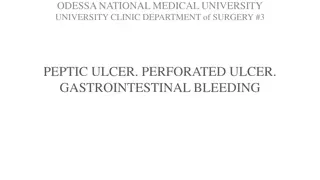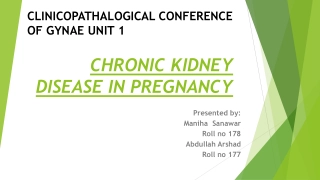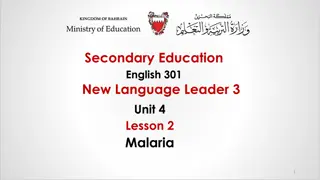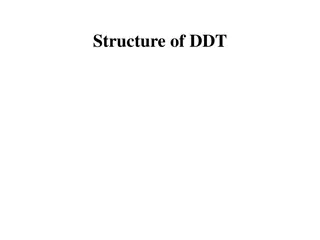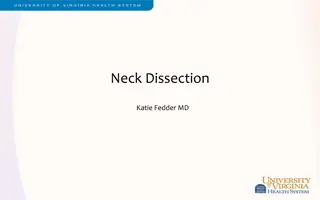Insect Abdominal Structures and Appendages: An Overview
The abdomen of insects plays crucial roles in respiration, reproduction, digestion, excretion, and metabolism. The number of abdominal segments varies across species, with reductions and modifications seen in different insect groups. From the propodeum to pregential and postgenital segments, each part serves specific functions. Various appendages, such as styli, collophore, tracheal gills, anal papillae, and prolegs, aid in locomotion, respiration, and salt regulation. Understanding these structures is essential for comprehending the diverse adaptations of insects.
Download Presentation
Please find below an Image/Link to download the presentation.
The content on the website is provided AS IS for your information and personal use only. It may not be sold, licensed, or shared on other websites without obtaining consent from the author. Download presentation by click this link. If you encounter any issues during the download, it is possible that the publisher has removed the file from their server.
Presentation Transcript
Insect Structures Lect. 8-Grade 2-Dr. Gazang T. Omar Abdomen The number of abdominal segments varies. The primitive number appears to be 12, though this number is found today in only the Protura. Most insects have 10 or 11 abdominal segments, but several of these are reduced. The reduction occurs primarily at the posterior end, but in some endopterygotes the first segment is reduced and intimately fused with the metathorax. The insect abdomen has -tergum -sternum - pleuron. Biologically, the abdomen of insects plays an important role in (respiration, reproduction, digestion, excretion and intermediate metabolism). -First abdominal segment is called propodeum. -The more anterior segments of abdomen is pregenital, -The genital opening (gonopore) is located on or behind eighth or ninth sternum in the female, and behind ninth sternum in the male. -The postgenital segments include the 10th and, when present, the 11th abdominal segments. -Usually eight pairs of small lateral openings (spiracles) are present on the first eight abdominal segments. In grasshoppers, a pair of tympanum is found one on either side of the first abdominal segment
Modifications: Reduction in number of abdominal segments has taken place in many insects. -In spring tail only six segments are present. -In house fly only segments 2 to 5 are visible and segments 6 to 9 are telescoped within others. - In ants, bees and wasps, the first abdominal segment is fused with the metathorax and is called propodeum. Often the second segment forms a narrow petiole. The rest of the abdomen is called gaster. -In queen termite after mating the abdomen becomes gradually swollen due to the enlargement of ovaries.
Appendages: A.Pregenital Appendages in Wingless Insects 1. Styli: (Stylus: Singular) Varying number of paired tube like outgrowths are found on the ventral side of the abdomen of silverfish. These are reduced abdominal legs, which help in locomotion. 2. Collophore or ventral tube or glue peg: It is located on the ventral of the first abdominal segment of spring tail. It is cylindrical. It is protruded out by the hydrostatic pressure of haemolymph. It might serve as an organ of adhesion. It aids in water absorption from the substratum and also in respiration. 3. Retinaculum or tenaculum or catch: It is present on the ventral side of the third abdominal segment. It is useful to hold the springing organ when not in use.
B.Abdominal Appendages in Larvae 1. Tracheal gills: Gills are lateral outgrowths of body wall which are richly supplied with tracheae to obtain oxygen from water. Seven pairs of filamentous gills are present in the first seven abdominal segments of naiads of may fly. Leaf like gills are found at the end of abdomen of naiad of damselfly. 2. Anal papillae: A group of four papillae surrounds the anus in mosquito larvae. These papillae are concerned with salt regulation. 3. Prolegs : These are present in the larvae of moth, butterfly and sawfly. Two to five pairs are normally present. They are unsegmented, thick and fleshy. The tip of the proleg is called planta upon which are borne heavily sclerotized hooks called crochets. They aid in crawling and clinging to surface.
C.Abdominal Appendages in Winged Insects 1. Cornicles : Aphids have a pair of short tubes known as cornicles or siphonculi projecting from dorsum of fifth or sixth abdominal segment. They permit the escape of waxy fluid which perhaps serves for protection against predators. 2. Caudal breathing tube: It consists of two grooved filaments closely applied to each other forming a hollow tube at the apex of abdomen. e.g. water scorpion. 3. Cerci: (Cercus : Singular) They are the most conspicuous appendages associated normally with the eleventh abdominal segment. They are sensory in function. They exhibit wide diversity and form. 1-Long and many segmented - e.g. Mayfly 2-Long and unsegmented - e.g. Cricket 3-Short and many segmented - e.g. Cockroach 4-Short and unsegmented - e.g. Grasshopper 5-Forceps like e.g. Earwigs Forceps water scorpion. Cornicles
4. Anal styli: A pair of short unsegmented structures is found at the end of the abdomen of male cockroach. They are useful to hold the female during copulation. 5. Ovipositor: The egg laying organ found in female insect is called ovipositor. It is suited to lay eggs in precise microhabitats. It exhibits wide diversity and form. 1-Short and horny: e.g. Short horned grasshopper 2-Long and sword like: e.g. Katydid, long horned grasshopper 3-Needle like: e.g. Cricket 4-Ovipositor modified into sting: e.g. Worker honey bee. 5-Long and permanently extruded: eg. Ichenumon fly An appendicular ovipositor is lacking in fruit flies and house flies. In fruit flies, the elongated abdomen terminates into a sharp point with which the fly pierces the rind of the fruit before depositing the eggs. In the house fly the terminal abdominal segments are telescopic and these telescopic segments aid in oviposit ion.
